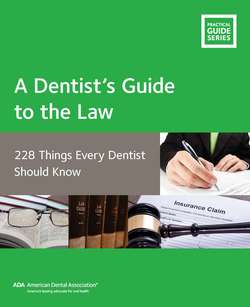Читать книгу A Dentist’s Guide to the Law - American Dental Association - Страница 89
На сайте Литреса книга снята с продажи.
44. What Protective Measures Can I Build Into the Design of My Site to Help Avoid Liability?
ОглавлениеMost websites use certain tools to protect against legal liability. The most common is the use of disclaimers. Disclaimers are typically housed in “Terms of Use” that explain and attempt to bind the user to the rules and limits of the site. Another tool is the “sign on” or “participation” agreement for particular site functions, which requires the user to specifically agree to certain additional rules, typically by clicking “I Accept” before accessing the desired Web page or function. These mechanisms usually purport to limit the user’s ability to sue for information on the site, or for what happens on the site, or for the results of using the site. The likelihood that these limitations will be upheld in court is at least theoretically advanced if your lawyer is able to tell the judge things such as:
• The user could not use those portions of the website without first seeing the rules
• The user had to proactively “click” his mouse on the “I Accept” button and thereby accept an agreement to play by those rules in order to obtain access to those portions of the website
• The user could always easily review those rules through a simple click on a readily identifiable link
If you post rules or policies that state you will not collect, use, disclose or track certain site visitor information, make sure that you abide by these rules or policies. The Federal Trade Commission (FTC) considers it a deceptive trade practice not to abide by a privacy policy that was posted on your website when the information about an individual was collected, unless you have obtained the individual’s consent to do otherwise. If your website may collect personal information you should take reasonable steps to protect the information.
Another legal concern has to do with website accessibility. The U.S. Department of Justice has stated that the websites of “public accommodations” must be accessible to individuals with disabilities under the Americans with Disabilities Act, a public accommodation is a business that is generally open to the public, including a dentist’s office. If you are developing a website for your practice, it would be prudent to have your website developer assure that your website will be accessible to persons with disabilities in compliance with some recognized standard, such as Section 508 or W3C Web Content Accessibility Guidelines (WCAG) 2.0.
